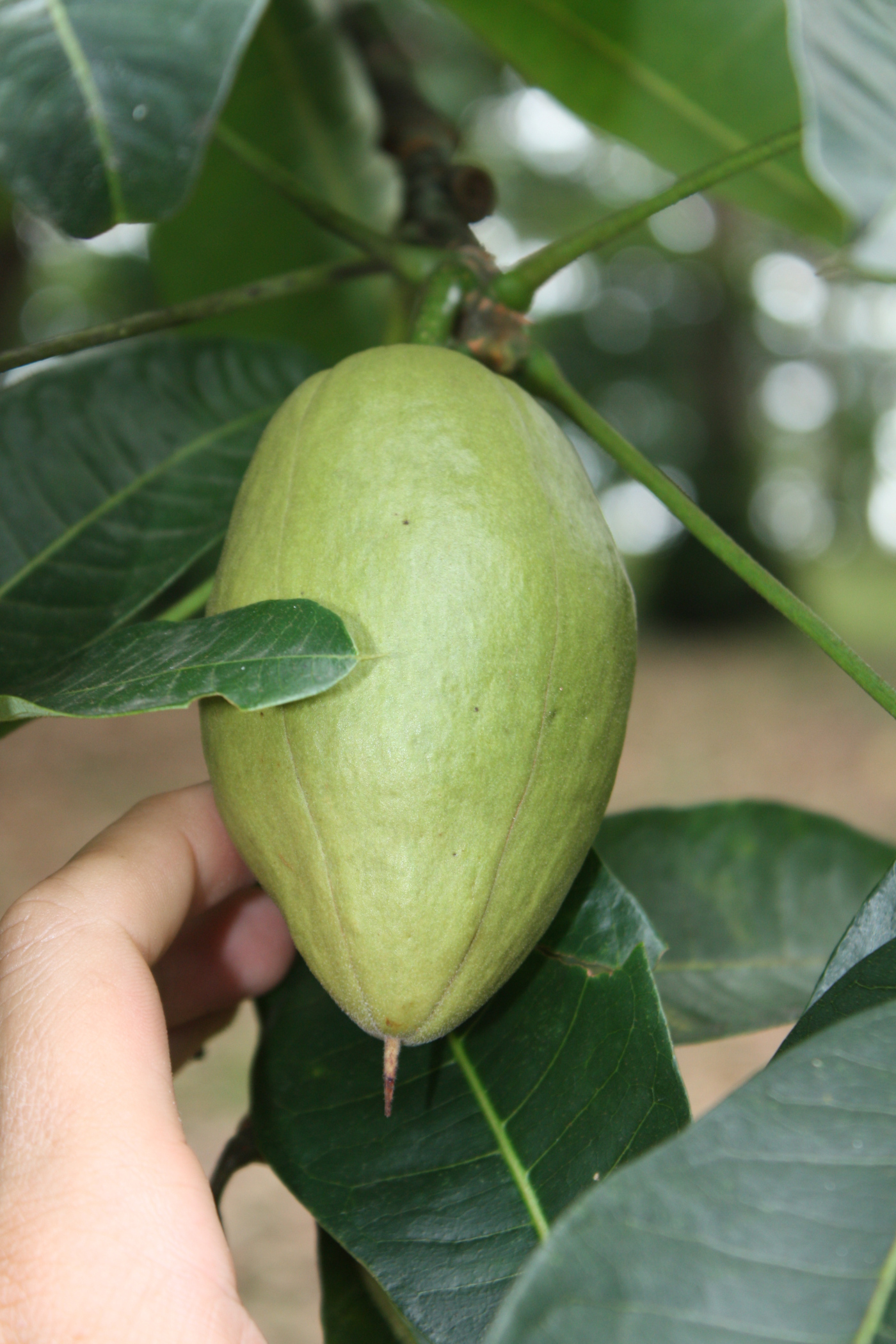BACKGROUND, ORIGIN AND DISTRIBUTION
Originating in Mexico, Guiana, and northern Brazil, Pachira glabra is similar looking and closely related to Pachira aquatica, the Malabar chestnut. In Brazil the Saba nut is a fruit tree, cultivated as an ornamental in south-eastern areas of the country. It is not very frequent in its natural habitat, the pluvial Atlantic forests from Pernambuco to Rio de Janeiro and the flood plain forests of Para and Maranhao. Today this species is distributed throughout the tropical world, used both as an ornamental tree and a food crop.
It is a small evergreen tree 4-6 m tall. The fruits are semi-woody capsules which stay green even when ripe. Like many of the Bombacaceae species P. Glabra has a very fat trunk to store water. Just after germination the girth of the trunk becomes noticeable, almost disproportional to the rest of the tree.
USES AND ETHNOBOTANY
The tree produces a fruit/pod which contains many edible seeds which can be consumed raw or toasted/roasted/boiled. The seeds contain 16% protein and 40-50% fat. P. glabra along with P. aquitaca are both considered to be among the more notable under appreciated tropical food crops.
The young leaves and flowers of P. glabra (and P. aquatica) are also edible.
Mature trees will produce between 50 - 80 fruits per year.
PROPAGATION AND CULTIVATION
The tree can be propagated from seed, cuttings, and air layers. Trees are resilient to both droughts and flooding.
USES IN REGENERATIVE AGRICULTURE
P. glabra makes a fantastic full sun / deep shade tolerant, medium size, understory seed/nut crop. Trees are resilient to pests, they drop a thick leaf biomass year round and produce abundant fruit. The trees are relatively maintenance free aside from irrigation upon initial establishment.

